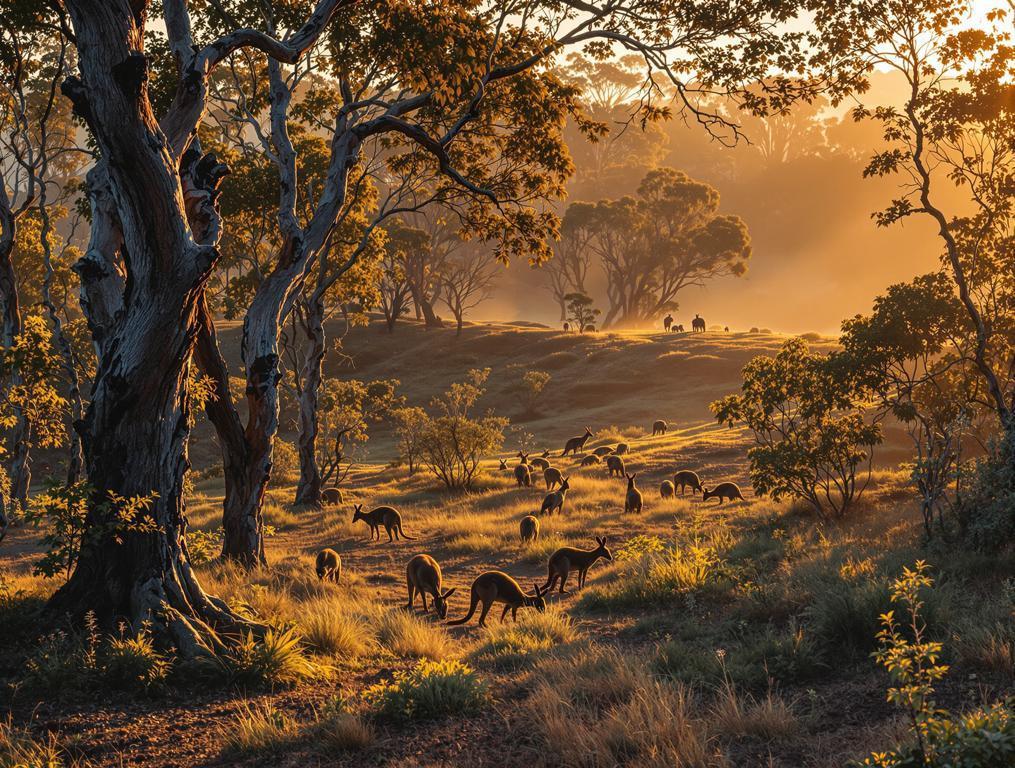The morning light filters through eucalyptus trees as I stand at the edge of Tonimbuk Farm, surrounded by the gentle rustling of the Australian bush. This tiny hamlet of just 229 residents sits quietly in Victoria’s Cardinia Shire, about 70 kilometers east of Melbourne. What strikes me immediately isn’t its size but its spirit. Nearly erased by devastating bushfires in 2019, Tonimbuk refused to disappear.
My boots crunch on gravel as I follow Lisa, whose family has lived here for generations, toward a ridge overlooking the property. “Most visitors drive right past,” she tells me. “They’re heading to Gumbuya World or Puffing Billy. That’s exactly why we love it here.”
How a town of 229 residents rebounded from near destruction
The 2019 bushfires that tore through Tonimbuk left little standing. Where other small communities might have surrendered, these 229 resilient residents chose to rebuild. Unlike climate-challenged communities elsewhere facing gradual displacement, Tonimbuk experienced sudden devastation yet chose to stay and recover.
Today, walking through the bush trails around Tonimbuk Farm, it’s hard to imagine the apocalyptic scenes from just six years ago. Native gum trees show charred trunks but new growth stretches skyward – nature’s own metaphor for the town’s comeback.
“The flames came right up to our fence line,” Lisa points toward Bunyip State Park, which encircles much of the property. “We lost most of our outbuildings, but somehow the main house survived.” Her family’s response wasn’t to leave but to reimagine – transforming their 45-acre property into a hub for visitors seeking authentic bush experiences.
A rural retreat unlike South Australia’s agricultural powerhouses
While South Australian farming communities focus on agricultural production, Tonimbuk offers something entirely different: immersion in recovery. The town doesn’t boast sprawling wheat fields or massive cattle operations. Instead, visitors find intimate farm stays where horses graze beside camping areas and the boundary between farm and bush deliberately blurs.
“In Melbourne, I’m constantly surrounded by noise and people. Here, I woke to kangaroos outside my tent and absolute silence except for birdsong. It’s only an hour from the city, but it feels like another world entirely.”
Unlike the seasonal wildflower spectacles of Western Australia’s small towns, Tonimbuk’s appeal lies in its year-round accessibility to nature. Winter brings mist-shrouded mornings perfect for bushwalking, while summer offers stargazing under skies unmarred by light pollution.
The Four Brothers Rocks formation in nearby Bunyip State Park provides panoramic views after a moderate hike, while Mount Cannibal offers more challenging terrain for experienced walkers. What distinguishes these trails from more famous Australian bushwalks is the solitude – even during peak seasons, you’ll rarely encounter another soul.
What the guidebooks won’t tell you
Access Tonimbuk via Tonimbuk Road off the Princes Highway, approximately 15 minutes from Drouin. The unsealed roads can be challenging after rain, so a vehicle with decent clearance is recommended – though my rental sedan managed fine during this winter visit.
Visit during July and August (Australia’s winter) for the most tranquil experience. The crisp mornings reveal wildlife at their most active, with kangaroos and wallabies visible from dawn until 9am. Contrary to conventional wisdom about Australian travel, winter here means fewer crowds and more authentic encounters.
For those seeking accommodation, Tonimbuk Farm offers powered caravan sites for $35 per night, with views overlooking the dam. The sites come with outdoor showers – a refreshing experience even in winter when the afternoon sun warms the water tanks.
After a day exploring, drive 10 minutes to Cannibal Creek Vineyard for a wine tasting that showcases regional varieties. The small cellar door operates Thursday through Sunday and pairs local cheeses with their estate-grown wines.
As I pack up to leave, the morning mist lifts from the valley, revealing kangaroos grazing at the forest edge. My photographer wife Sarah would have captured this perfectly, but sometimes moments are best experienced rather than documented. In local parlance, I’ve been properly “bushed” – found the stillness that Australia’s wilderness offers. Tonimbuk may be small, but its resilience and beauty suggest this won’t remain a hidden gem for long.
